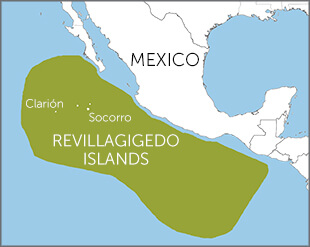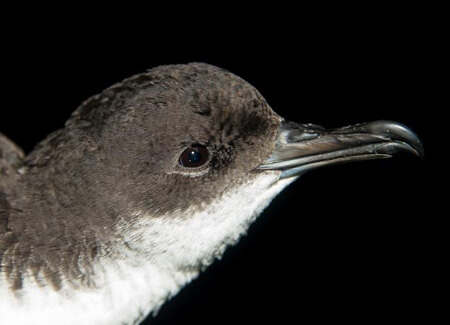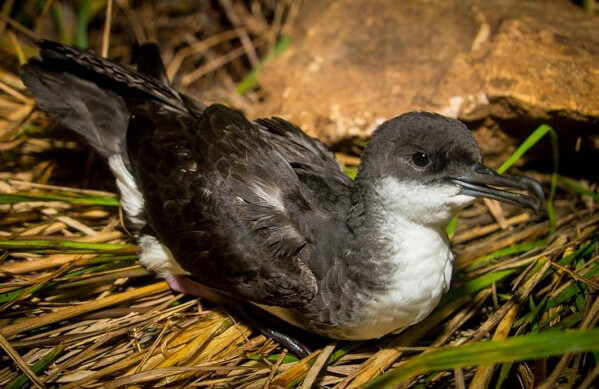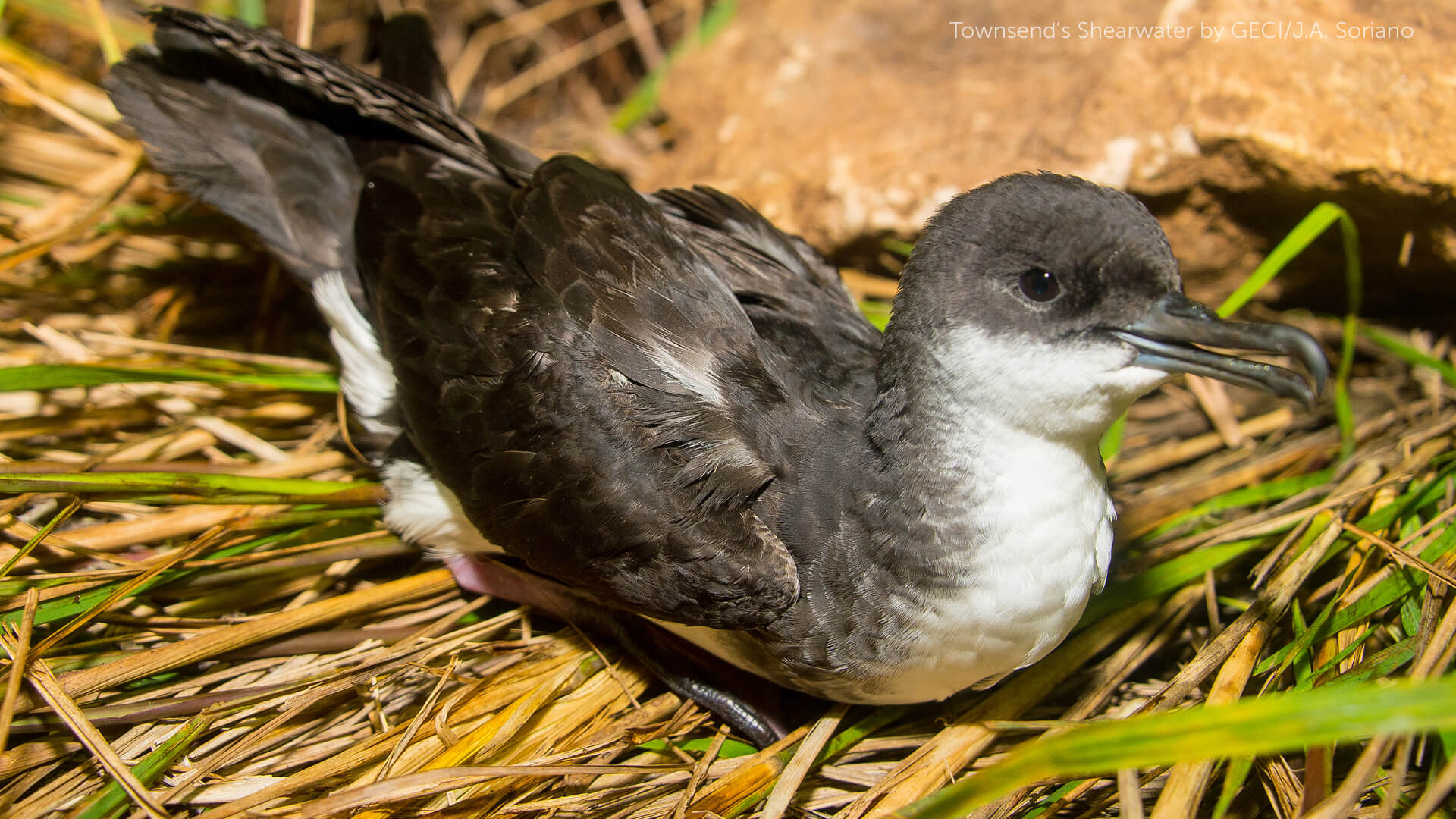
Townsend's Shearwater map by Birds of North America, https://birdsna.org, maintained by the Cornell Lab of Ornithology.
This eye-catching black-and-white seabird is closely related to Newell's Shearwater of Hawai'i, from which it was split in 2015. These lookalike species "shear" or closely skim the ocean surface as they fly, a flight style shared by the Pink-footed Shearwater of Chile.
Townsend's Shearwater and other "tubenoses” are specialized for life at sea, with a unique structure on the bill that secretes excess salt — a necessary function, since seabirds drink ocean water. The feature also contributes to the birds' highly developed sense of smell.
Last Stand at Revillagigedo
Once found nesting throughout Mexico's Revillagigedo archipelago, Townsend's Shearwater is now found primarily on Socorro island, with a few on Clarión. (The island chain is volcanic, and the species' population on San Benedicto island was extirpated by a volcanic eruption in 1952.)
The archipelago lies 250 miles off the western coast of Mexico, south of the Baja California peninsula. Thanks to Mexico's 2017 action to establish Revillagigedo Archipelago National Park, the area now comprises North America's largest fully protected marine reserve. The area also became a UNESCO World Heritage site in 2016.
Revillagigedo is an important gathering place for migratory sea life such as sharks, whales, and sea turtles, and the islands are rich in species found nowhere else. Nine endemic bird species call Socorro their only home, while Clarión is home to three endemic birds.
In spite of the archipelago's protected status, much remains to be done. Introduced sheep, pigs, and rabbits destroyed Townsend's Shearwater nesting sites on Clarión by 1988, and although the sheep and pigs have since been removed, rabbits remain a potential threat; their browsing of vegetation can open up nest sites to predators. Socorro's colonies are in danger due to introduced cats and rodents.
In Pursuit of Prey
Townsend's Shearwaters capture their prey, mainly squid and fish, by using a method known as pursuit-diving. The birds fly above the water until they spot a potential food item, then plunge into the water in pursuit, sometimes submerging up to 30 feet. They may briefly swim underwater with partly folded wings and can swallow prey while swimming. (Watch an ABC video on seabird foraging techniques.)

Townsend's Shearwater. Photo by GECI
These shearwaters often associate with schools of large, predatory fish such as tuna. These fish drive smaller fish near the surface, making them easier to catch.
This shearwater is often spotted resting on the water while foraging at sea. Unlike the graceful soaring flight of Laysan or Black-footed Albatrosses, the nonmigratory Townsend's Shearwater flies low over the water on rapidly beating wings. The species' shorter, rounder wings, helpful for diving after prey, are the reason for this energy-intensive flight style.
Late Mates
Like Black-capped Petrel, Ringed Storm-Petrel, and many other seabirds, Townsend's Shearwater comes to land only to breed, traveling to and from its colonies under the cover of night. The birds mature at a later age than many other avian species: They form pair bonds at four to five years old and usually making their first breeding attempt at approximately six. The monogamous mates lay one egg per year.
On Socorro island, Townsend's Shearwaters nest in rocky, high-elevation burrows in dense, brushy areas — places that are difficult for predators to reach. Shearwaters may skip breeding depending on prey availability, and frequently almost half of a colony's pairs sit out the season.
Sign up for ABC's eNews to learn how you can help protect birds
Working to Save an Island Species
The most severe threat Townsend's Shearwaters face is predation by introduced mammals, particularly feral cats. While fishery impacts are generally unknown, fleets that target tuna may impact the availability of prey to this species.
To ensure this shearwater's survival, American Bird Conservancy and Mexican partner group Grupo Ecología y Conservatión de Islas (GECI) are working to restore habitat and remove introduced species on Socorro. GEIC biologists are also studying Townsend's Shearwater's breeding and foraging patterns.
One of Socorro's other rare and endemic bird species, the Socorro Dove, now exists only in captivity, but thanks to conservation efforts by GECI, ABC, and other partners, it may soon thrive again in its ancestral home.
ABC's Seabird Program also works to promote the Agreement on the Conservation of Albatrosses and Petrels (ACAP), a legally binding international treaty intended to reduce threats to seabirds. ACAP provides best practices for fisheries that may jeopardize these rare and vulnerable species.
Donate to support ABC's conservation mission!




















































